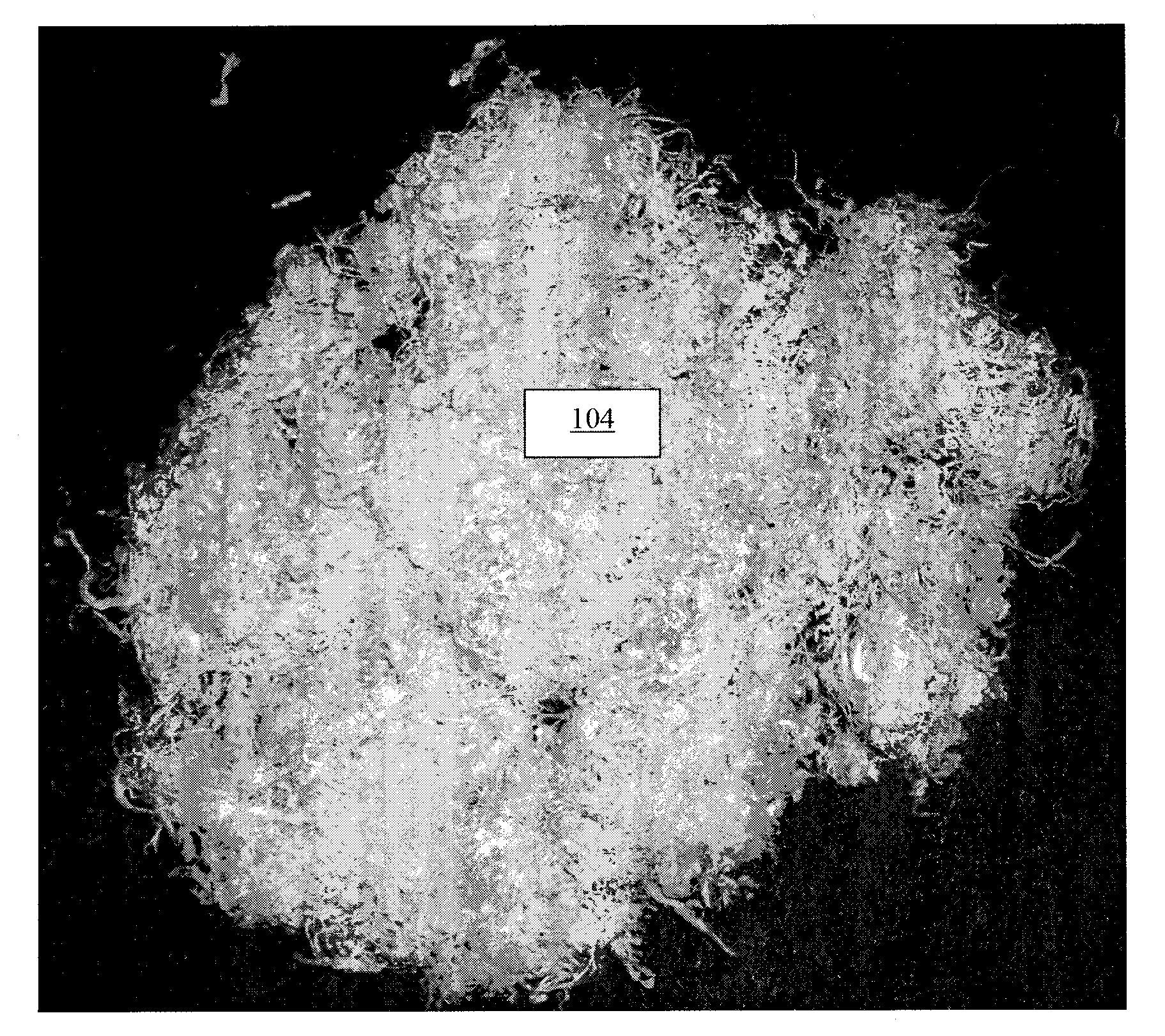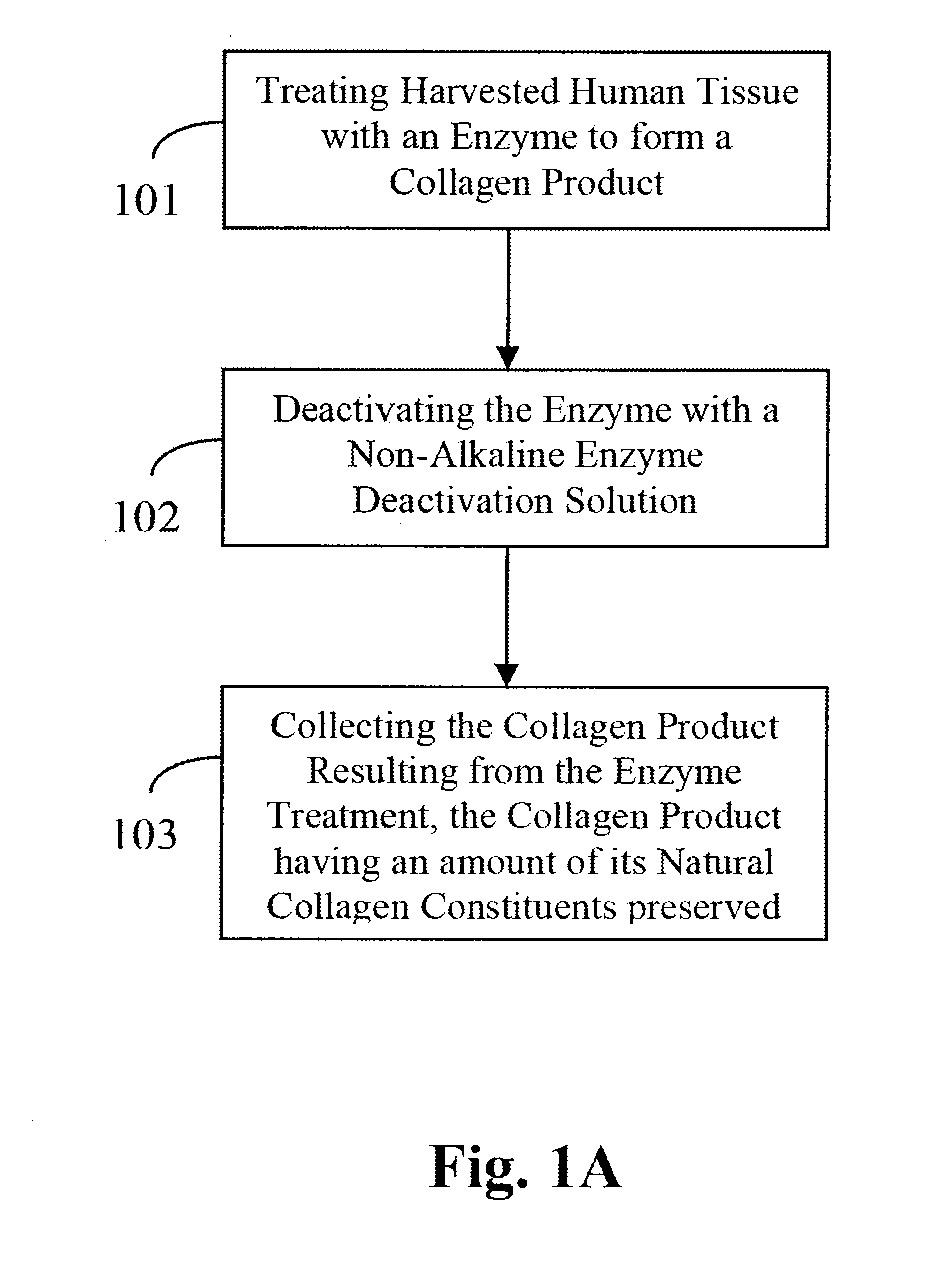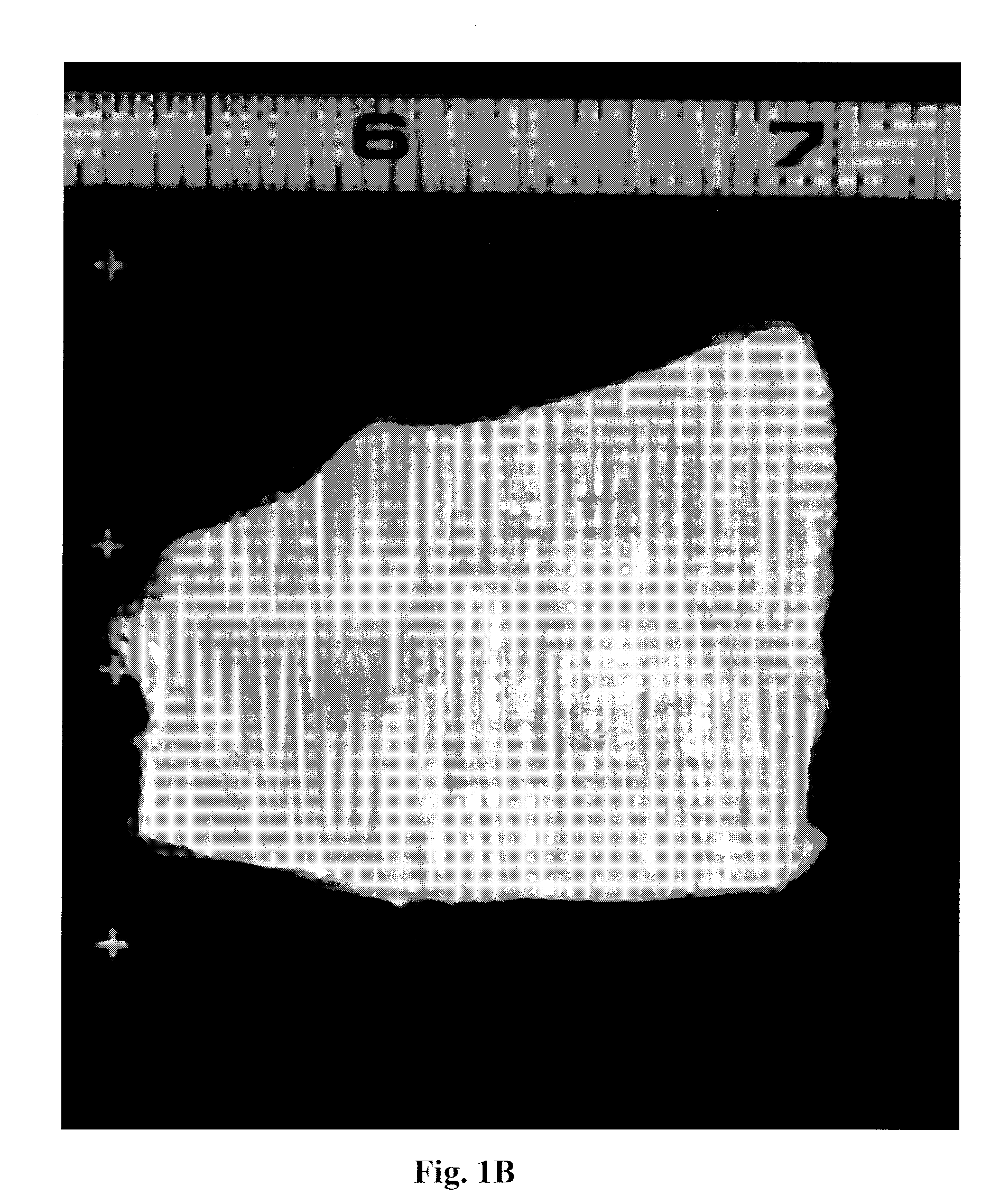Foam-formed collagen strand
a collagen strand and foam technology, applied in the field of foam-formed collagen strands, can solve the problems of hematoma, adhesion, hematoma, and tissue contamination with viruses or prions, and achieve the effect of desirable handling properties and low immunogenicity
- Summary
- Abstract
- Description
- Claims
- Application Information
AI Technical Summary
Benefits of technology
Problems solved by technology
Method used
Image
Examples
example
Comparison of Collagen Product Scaffolds Based on Intermediate Collagen Product
Collagen product scaffolds have different physical characteristics when formed from intermediate collagen product II, III, and an intermediate collagen product that contains the liquid component of the blended collagen product dispersion, i.e., with any foam removed.
A collagen product scaffold made from intermediate collagen product II, e.g. a reconstituted collagen product foam layer from human-derived fascia and a leveling agent, is substantial, resists deformation and tearing when handled roughly, but is pliable. FIG. 15 is a photograph of a collagen product scaffold 1501 produced from intermediate collagen product II made from human fascia as a starting material, which may be prepared for use as a medical implant in accordance with certain embodiments of the present invention.
A scaffold produced from intermediate collagen product III, e.g., collagen product from human-derived fascia and a leveling age...
PUM
| Property | Measurement | Unit |
|---|---|---|
| length | aaaaa | aaaaa |
| length | aaaaa | aaaaa |
| particulate size | aaaaa | aaaaa |
Abstract
Description
Claims
Application Information
 Login to View More
Login to View More - R&D
- Intellectual Property
- Life Sciences
- Materials
- Tech Scout
- Unparalleled Data Quality
- Higher Quality Content
- 60% Fewer Hallucinations
Browse by: Latest US Patents, China's latest patents, Technical Efficacy Thesaurus, Application Domain, Technology Topic, Popular Technical Reports.
© 2025 PatSnap. All rights reserved.Legal|Privacy policy|Modern Slavery Act Transparency Statement|Sitemap|About US| Contact US: help@patsnap.com



